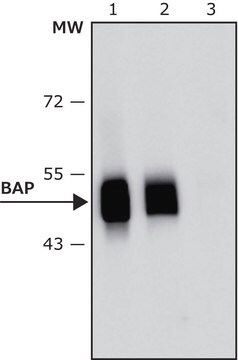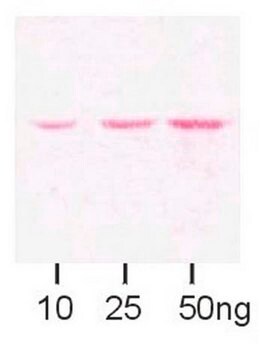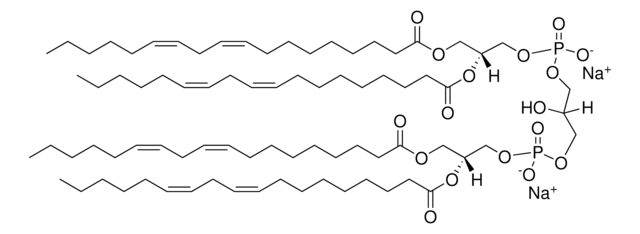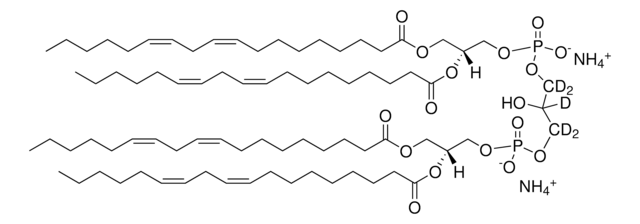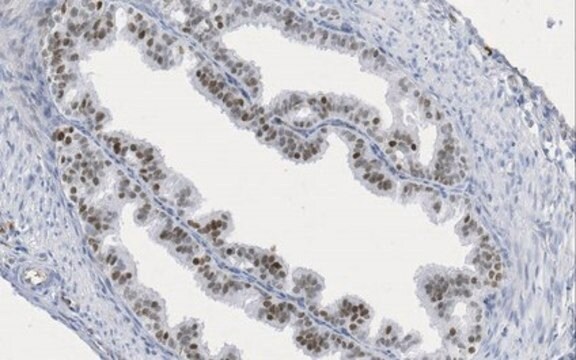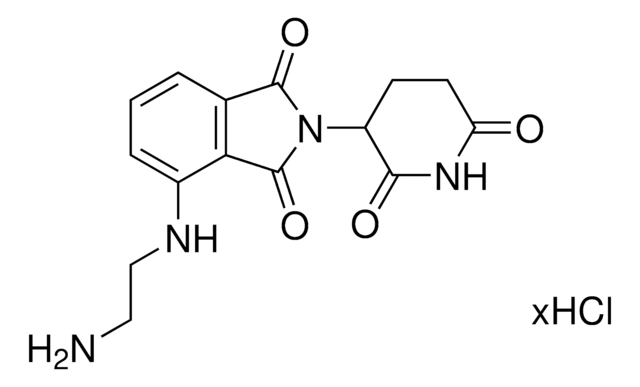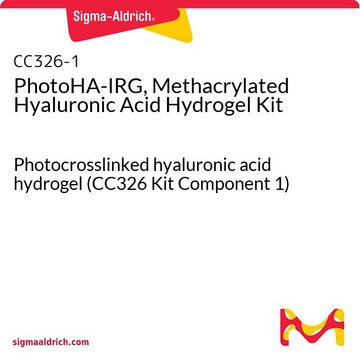ABS1644
Anty-DsbA-L
from rabbit
Synonim(y):
Glutathione S-transferase kappa 1, EC:2.5.1.18, GST 13-13, GST class-kappa, GSTK1-1, mGSTK1, Glutathione S-transferase subunit 13
About This Item
Polecane produkty
pochodzenie biologiczne
rabbit
forma przeciwciała
unpurified
rodzaj przeciwciała
primary antibodies
klon
polyclonal
reaktywność gatunkowa
mouse, human
opakowanie
antibody small pack of 25 μL
metody
immunocytochemistry: suitable
immunoprecipitation (IP): suitable
western blot: suitable
izotyp
IgG
numer dostępu NCBI
numer dostępu UniProt
Warunki transportu
ambient
docelowa modyfikacja potranslacyjna
unmodified
informacje o genach
mouse ... Gstk1(76263)
Opis ogólny
Specyficzność
Immunogen
Zastosowanie
Analiza Western Blotting: Reprezentatywna partia wykryła DsbA-L w mózgu myszy, nerce myszy i wątrobie myszy (Liu, M., et. al. (2008). Proc Natl Acad Sci USA. 105(47):18302-7; Lui, M., et. al. (2015). J Biol Chem. 290(16):10143-8).
Analiza immunoprecypitacji: Reprezentatywna partia wykryła DsbA-L w adipocytach 3T3-L1 (Liu, M., et. al. (2008). Proc Natl Acad Sci USA. 105(47):18302-7; Lui, M., et. al. (2015). J Biol Chem. 290(16):10143-8).
Analiza immunocytochemiczna: Reprezentatywna partia wykryła DsbA-L w adipocytach w 7 dniu różnicowania i została wykorzystana do następujących badań. konfokalne badanie immunofluorescencyjne ko-lokalizacji DsbA-L z markerem mitochondrialnym (MitoTracker) i markerem ER (PDI) w adipocytach 3T3-L1 (Lui, M., et. al. (2015). J Biol Chem. 290(16):10143-8).
Signaling
Jakość
Western Blotting Analysis: A 1:1,000 dilution of this antibody detected DsbA-L in 10 µg of mouse kidney tissue lysate.
Opis wartości docelowych
Postać fizyczna
Przechowywanie i stabilność
Inne uwagi
Oświadczenie o zrzeczeniu się odpowiedzialności
Nie możesz znaleźć właściwego produktu?
Wypróbuj nasz Narzędzie selektora produktów.
Klasa zagrożenia wodnego (WGK)
WGK 1
Certyfikaty analizy (CoA)
Poszukaj Certyfikaty analizy (CoA), wpisując numer partii/serii produktów. Numery serii i partii można znaleźć na etykiecie produktu po słowach „seria” lub „partia”.
Masz już ten produkt?
Dokumenty związane z niedawno zakupionymi produktami zostały zamieszczone w Bibliotece dokumentów.
Nasz zespół naukowców ma doświadczenie we wszystkich obszarach badań, w tym w naukach przyrodniczych, materiałoznawstwie, syntezie chemicznej, chromatografii, analityce i wielu innych dziedzinach.
Skontaktuj się z zespołem ds. pomocy technicznej